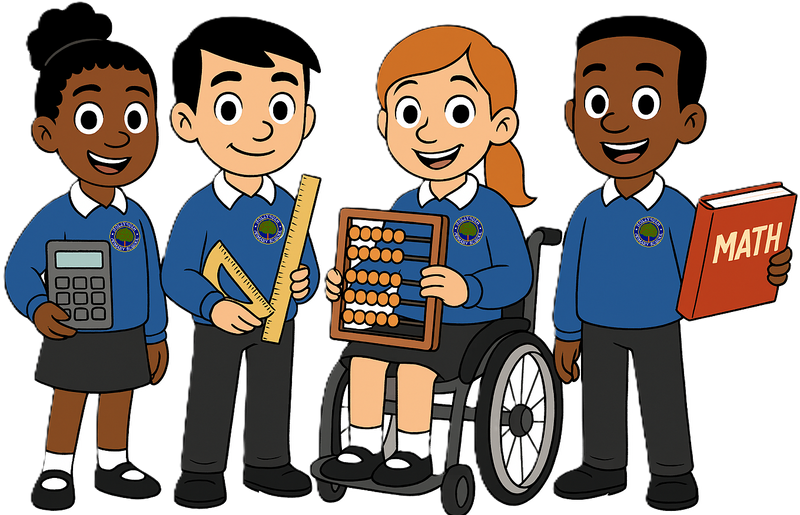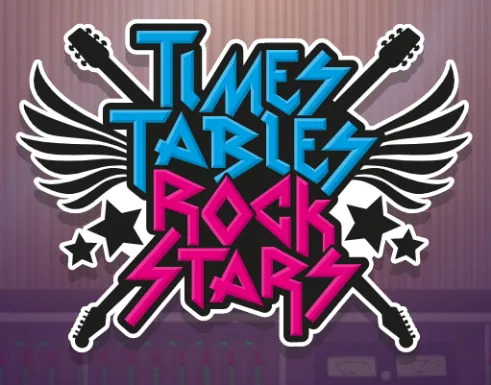
Maths

Vision and Intent
At Hollybush Primary school we strive to develop confident, enaged and happy mathematians by encouraging a mathematical growth mindset that enables the children to develop their mathematical language, conceptual understanding and mathematical thinking.Thus, allowing them to solve mathematical problems, make progress in line with their peers nationally and therefore increase their future life chances. We believe that all children should have a high level of mathematical ability and feel empowered to implement this confidently both in school and beyond. The Maths Mastery curriculum is developed on a ‘Success for all’ and we strive for all learners to make good levels of development in mathematics, regardless of ability or challenge. We continue to work towards narrowing the attainment gap for disadvantaged and pupil premium children, through quality first teaching, appropriate challenge and targeted intervention.
Maths is taught daily. The 2014 National Curriculum for Maths aims to ensure that all children: become fluent in the fundamentals of Mathematics, are able to reason mathematically and can solve problems by applying their Mathematics. At Hollybush Primary School we have a consistent ‘6 step process’ to our Maths lessons that provides a clear structure for our children allowing them to think mathematically, use mathematical language in full sentences and increase conceptual understanding.
Our curriculum is mapped by the carefully sequenced Maths Mastery long term plan where the initial focus at the start of each year group is Place Value which underpins learning in other areas of Maths. This is supported by Classroom Secrets and White Rose Maths Hub online resources. We are working to develop the use and range of practical resources available in the classroom to support the children in their learning. Alongside the Math’s Curriculum, we are delivering ‘Maths Meetings’ which give our pupils the opportunity to recall and re-visit different mathematical concepts.

EYFS
We believe that having a secure understanding of mathematical concepts is essential and we develop this from the early years. This enables our children to build upon their knowledge as they move through the school and build a greater depth of understanding of mathematics, which will support them through their future education.
Whilst our children are in early years, they follow a sequenced long-term Maths Mastery plan which has been adapted to suit the needs of our nursery children. These early mathematical concepts are taught through class teaching and provision. Children are encouraged to use mathematical language from an early age
Key Stage 1 and Key Stage 2 - Basic Input Structure
All Maths lessons throughout Hollybush follow a 6 part process:
1. Do Now – This can include previous skills the children have learnt and children are encouraged to do this collaboratively.
2. Star Words – Mathematical language is introduced that will need required for the session.
3. New Learning – Teaching the mathematical skill based on the learning objective.
4. Talk Task/Let’s Explore – Children work collaboratively, often with manipulatives, to tackle a problem and are encouraged to use mathematical language.
5. Develop Learning – Problem solving and reasoning is further introduced to the children.
6. Independent Task – Children attempt to apply taught skill.
7. Plenary – Used as an opportunity to secure further understanding of the skill.
Counting takes place daily and where possible more frequently in KS1 and EYFS.
Basic Work Structure
Learning in Maths lessons in KS1 (where appropriate) and in KS2 follows the Basic Work Structure:
Where applicable, children complete 4-5 skill specific questions to demonstrate understanding of mathematical skills being taught.
3-2-1 model is employed for each child’s ability level. These are identified as: developing, expected, greater depth. 3- Varied fluency skills-based questions (3-4 skill questions.) 2- Problem solving (2-4 problem solving questions) 1- Reasoning (1-2 reasoning questions)
Impact
When children leave Hollybush Primary School they will:
· Be able to think mathematically with a growth mindset.
· Have a strong conceptual understanding which they are able to apply to different scenarios.
· Be able to have a bank of mathematical language which they feel confident in using.
· Be fluent in the basics of mathematics, reason, mathematically and use their knowledge and skills in problem solve in a range of contexts.
· Make progress in line with their peers nationally in Mathematics.
· Secure age related expectations in Maths skills to ensure success for all across all subject areas.



TT Rockstars / Times tables
Times tables are key to speed and accuracy in many mathematical areas, therefore we believe in building these skills as early as possible. Times tables is delivered in KS1 and KS2. This begins with chanting from Year 1 and then a whole school approach onwards. Times table rockstars is used as an additional layer for building rapid recall.


An example of PiXL 3 in 3

